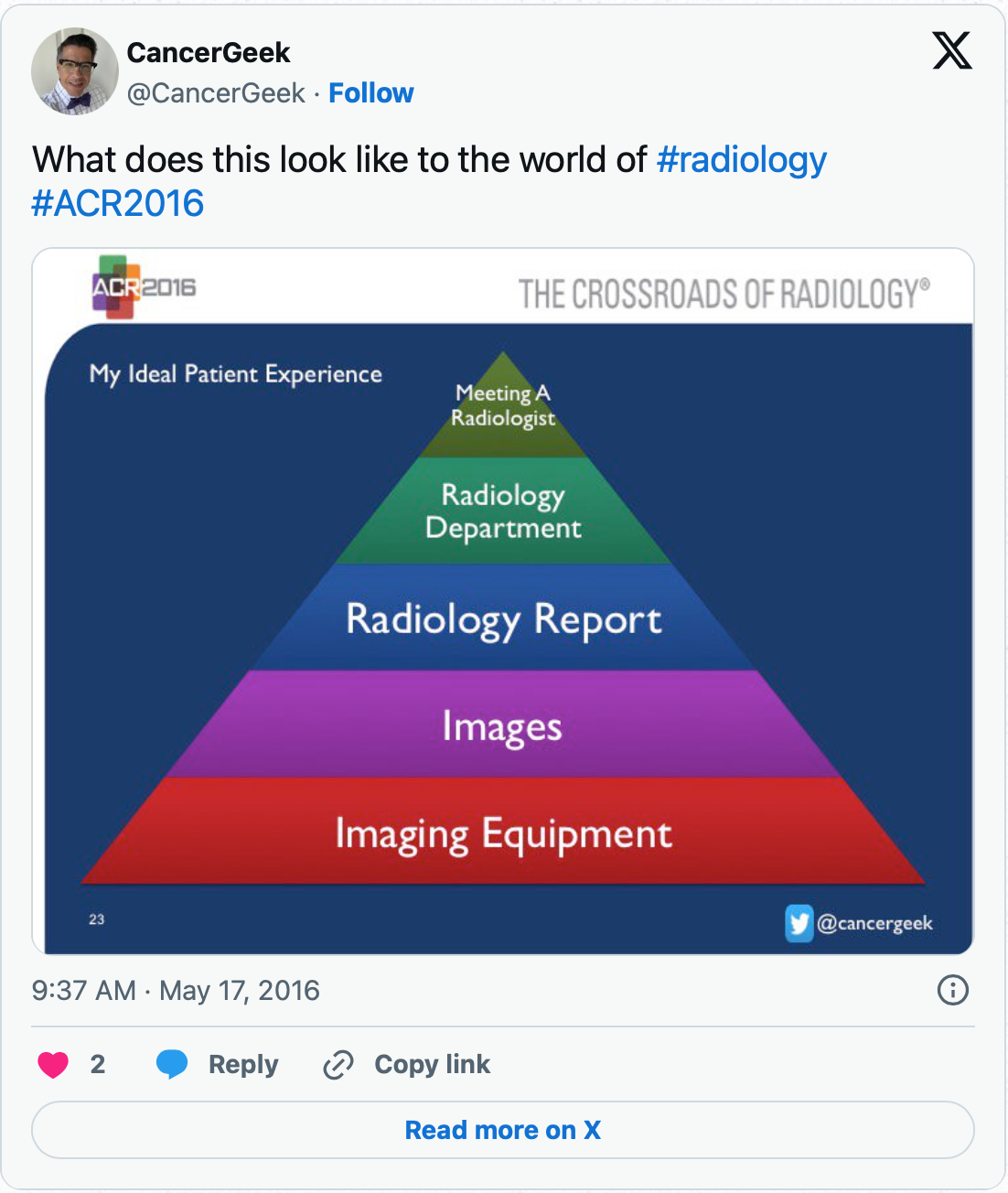ACR: Speakers share differing views regarding the future of radiology
Nathan Coleman, PGY-II, R-I
Attendees of the ACR 2016 National Meeting were offered two dramatically different views of the future of Radiology. The first came from the keynote speech given by Dr. Ezekiel Emanuel, an oncologist and faculty member at the University of Pennsylvania School of Medicine and the Warton School (as well as the brother of Chicago mayor Rahm Emanuel). Incidentally, he played a significant role in the development of the Affordable Care Act, has published numerous books on healthcare ethics and policy, and previously was the Chief of the Department of Bioethics at the Clinical Center of the NIH.
Dr. Emanuel’s talk focused on the changing nature of healthcare and how it, inevitably, in his opinion, would shift away from inpatient care and subsequently, medical imaging. In light of the $3.24 trillion the United States spends on health care annually, change is certainly to be expected, but Dr. Emanuel’s vision of that change was grim, particularly for radiology. In addition to his predicted coming decrease in medical imaging, Dr. Emanuel sees the advancement of Artificial Intelligence and “Deep Learning” pattern recognition programs as direct threats to radiologists, rather than tools to be wielded by the Radiologic community. Interestingly, there was little discussion of the role pharmaceutical companies, bloated hospital administrations, and private insurance companies have in driving up healthcare costs. While the talking points were unsurprisingly controversial, they stimulated numerous conversations in meeting rooms, hotel lobbies, and around dinner tables throughout the rest of the week.
A more optimistic, but equally motivating, address was given by Andrew DeLoa for the annual Moreton Lecture. Mr. DeLao, widely known by his Twitter handle, @CancerGeek, has a long history in healthcare business, clinic and hospital development, health administration, and patient advocacy. He focused on Radiology’s role in “telling patient’s stories” due to the vital role it plays in nearly every aspect of a patient’s medical journey. Because of the interconnectedness Radiology has in the medical world, it has an opportunity to play a significant part in what Mr. DeLao calls the “Connection Economy.” By dedicating time towards gaining the trust of a patient and allowing the exchange of ideas between patient and physician, the connection economy is a way to create real value in health care. However, the connection economy doesn’t just involve patient-physician interaction. Mr. DeLao touched on the five “p’s” of the network that helps create the connection economy: politicians, payers, pharma, patients, and providers, and encouraged attendees to act as an active “node” in their network to create value and, most importantly, positive patient experiences. He highlighted ways to increase transparency and build patient trust, even without direct patient contact, by including summary reports of imaging for patients with key images, a picture of the radiologist, and contact info all attached to help patients understand the process they are actually undergoing when they have medical imaging.
While the Keynote Address and Moreton Lecture had starkly different tones, they both were effective highlights for important transitions in Radiology over the next several years. Clearly, the landscape of medicine is changing, and we will have to change with it. It is vital that we assert ourselves as key “nodes” in the connection economy of 21st century healthcare and play an active role in telling our patient’s stories as they progress through their individual medical journeys. It is also apparent that if we as Radiologists do not actively demonstrate our value by improving outcomes and enhancing the patient experience, we will be gradually pushed aside in the name of expediency.

